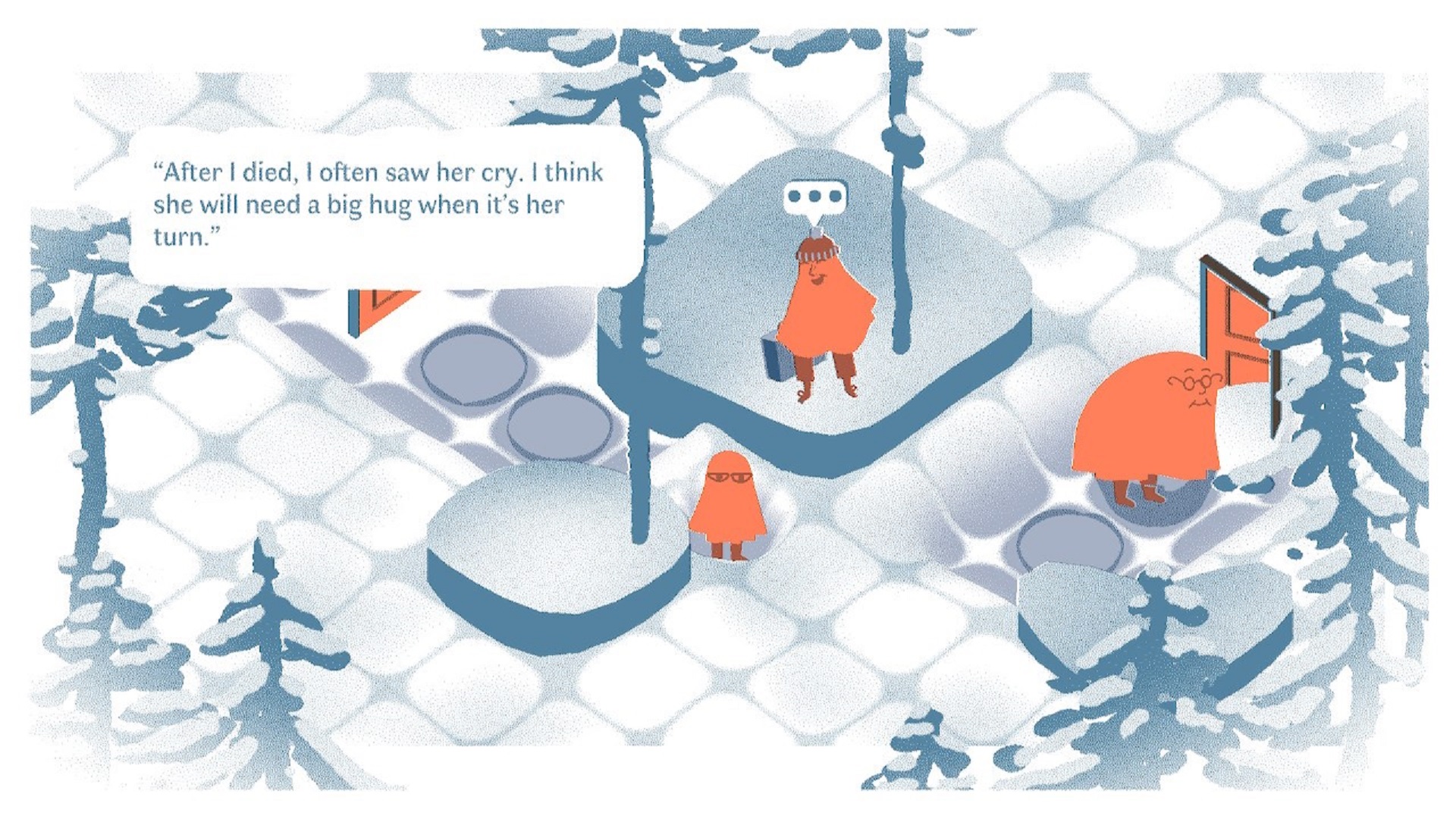Have you tried... puzzling your way to the afterlife in How to Say Goodbye
Help ghosts move on in narrative puzzle game How to Say Goodbye

Some Indians believe souls of the deceased hover about their house for a while after they die. They’re looking down to keep an eye on things, basically, to see if everything’s all going ship shape and everyone’s coming together. That might sound weird to the average person - and I couldn’t blame you - but it’s a given for so many people, a point of natural assumption.
One might feel a similar way about How to Say Goodbye’s starting point. The indie game by development duo Florien Veltman and Baptiste Portefaix posits that souls of the departed go to another plane of existence after death, and have to work their way to a point of natural rest and respite, from where they can proceed on to the afterlife proper and whatever awaits them there.
The act of playing How to Say Goodbye comes in the form of quick puzzle levels made up of interconnected conveyor belts. You might have two ghosts on a spaghetti heap of pathways, each moving in various directions with a simple pull or push, and it’s your job to get both the ghosts to predetermined points in the level, whereby they can head through doorways to successive levels.
Guiding ghosts


Have you tried… navigating the pitfalls of space capitalism in Citizen Sleeper?
Complicating factors quickly arise. How to Say Goodbye throws switches, turnstiles, and locked doors at the player in rapid succession, amping up the head scratching nature of the puzzles. You might have to send one ghost along a series of moving pathways to stand on a switch and lower a platform holding a key, for example, so the other ghost can nab the key and open the climactic door.
How to Say Goodbye’s puzzles are meant to be short and snappy by nature, and they work brilliantly. Scenarios rarely take more than two or three minutes to solve, and because there’s no explicit penalty for muddling up the level and sending your ghosts in a variety of confusing directions, it’s really easy to reset the whole thing and approach it again with a trial and error mentality.
The levels themselves are beautifully illustrated. Travelling through kitchens, snowy wastelands, and idyllic townscapes, levels have a handcrafted aesthetic to them, as though they’ve been plucked straight out of some art prodigy’s sketchbook and handed to you to worm your way around. They’re an absolute pleasure to take in, and you go out of your way to say hello to fellow ghosts trapped in this afterlife, and get a glimpse into other journeys running parallel to yours.
Death and the afterlife are very natural, normal points of order in How to Say Goodbye. Because the game starts off with your character in the afterlife, never having actually depicted you in the physical world, it’s almost easier to establish ground rules of all spirits wandering around a sort of purgatory before they can really move on, normalizing the entire thing.
Weekly digests, tales from the communities you love, and more


How to Say Goodbye almost disarms death, in a way. Death isn’t presented as something to be feared, as it often is in popular culture that tackles people leaving the mortal realm, but rather just the next stage of life that we almost must traverse, one way or another. How to Say Goodbye’s ghosts have overcome death, in a way, and so they’re lovely to talk to because they’re always looking forward to the next stage in their journey, rarely reflecting back on what they’ve been through, or upon death as some great trauma.
I really enjoyed How to Say Goodbye’s depiction of death and the afterlife. The latter is brilliantly honed in on as a fresh new adventure, weaving an imaginative tale of ghosts just looking to move on and find some comfort once they’re deceased. Death narratives have an odd way of focusing not on the ones who’ve actually died, but instead on the one’s who’re left alive to grieve in its wake. How to Say Goodbye flips this on its head, using death and the afterlife as a creative springboard with which to tell a new story, and it’s bleakly sublime.
How to Say Goodbye is out now on PC, Nintendo Switch, iOS, and Android.

Hirun Cryer is a freelance reporter and writer with Gamesradar+ based out of U.K. After earning a degree in American History specializing in journalism, cinema, literature, and history, he stepped into the games writing world, with a focus on shooters, indie games, and RPGs, and has since been the recipient of the MCV 30 Under 30 award for 2021. In his spare time he freelances with other outlets around the industry, practices Japanese, and enjoys contemporary manga and anime.


